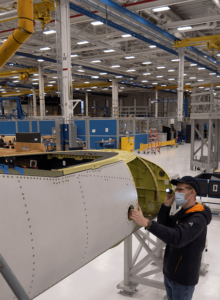
The U.S. Air Force is planning to roll out its digitally engineered T-7A Red Hawk trainer in St. Louis next week. Boeing [BA] and Sweden's Saab are the prime contractors on the plane, while Elbit Systems of America--a subsidiary of Israel’s Elbit Systems [ESLT]--builds the aircraft's cockpit and embedded training system. The T-7A test program achieved its 400th test flight in January and has been sharing the flight test data between Boeing personnel in St. Louis and program officials at…














